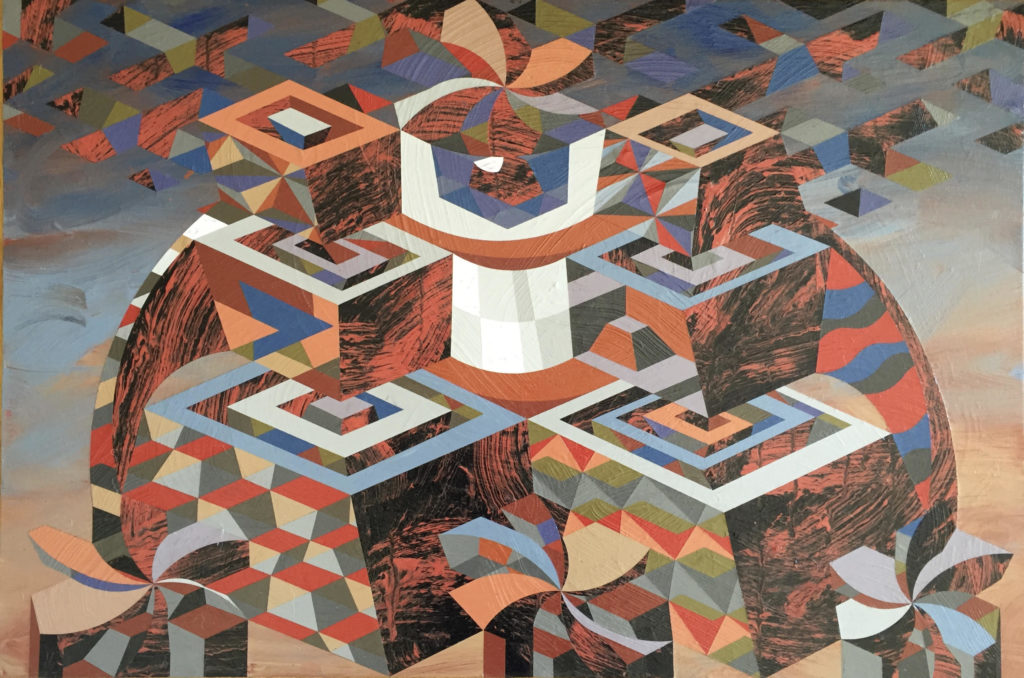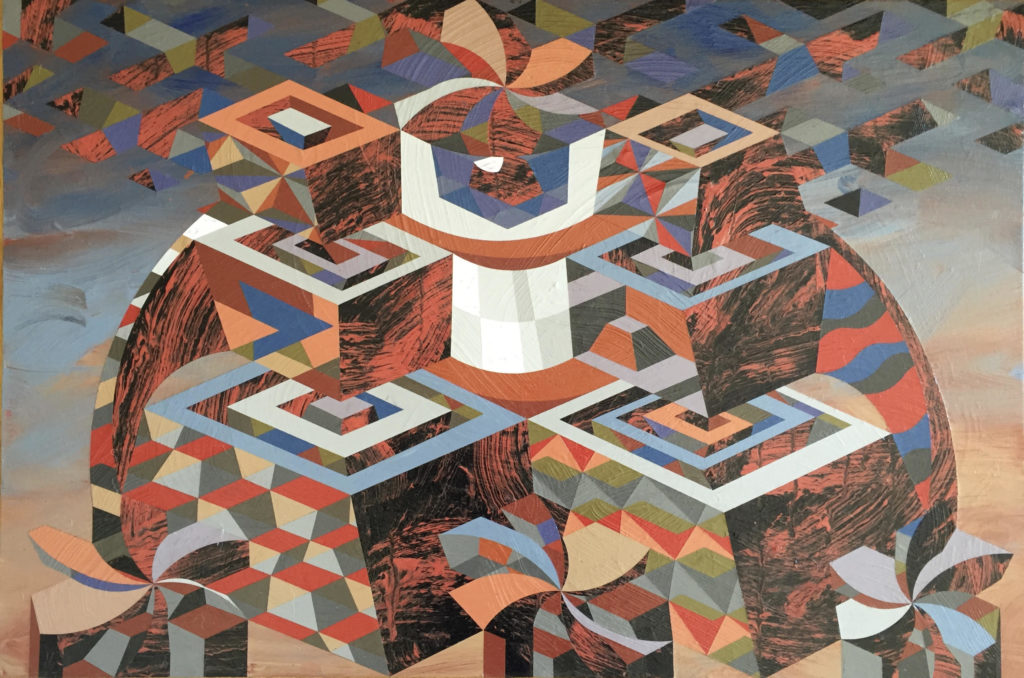[ad_1]

Matthew Abbott, Somewhere Over the Rainbow, 2010.
COURTESY LORETTA HOWARD GALLERY
Matthew Abbott, the English abstract painter known for weaving together blocky, geometric forms, died on October 3. He was 54. The news was confirmed by his friend, dealer Loretta Howard, in an email on Wednesday, October 30.
Abbott drew inspiration from a myriad of sources, spanning posters for rock concert to crossword puzzles to Islamic design. What resulted from that inspiration were highly dynamic paintings that burst with color, rhythm, form, shape, and more. His abstract paintings were a culmination of many symmetrical shapes, resulting in tableaus that are at once frenetic yet orderly.
Abbott made a name for himself in the New York scene with his paintings that employed puzzles and word play. Abbott titled his paintings had the poetic cadence of crossword puzzle clues, and even lifted some directly from those games, adding even more of mystery to those works. One wonders what the answer to the 2007 work 24-7 No-brainer or Convenience Shopping (2004) could have been.
Matthew Abbott was born in London in 1965. He has been based in the States since moving to Philadelphia in the early 1990s to get his MFA at the Tyler School of Art at Temple University in Philadelphia. After graduating from Tyler in 1992, he had his debut New York solo show that same year at the Fawbush Gallery in SoHo. Abbott soon set up shop in Brooklyn, where me maintained a studio in Williamsburg for much of his career. He had recently moved to San Francisco, and is survived by his wife, Amanda Schneider, who is an arts administrator and curator.
Abbott was represented primarily by the New York enterprise LMAK Gallery. His most recent show, titled “No Horizon Insight,” at the gallery’s Lower East Side space came in 2016. His work is held in collections of the Akron Art Museum in Ohio, the Denver Museum of Art, the Whitney Museum of Art in New York, the Museum of Modern Art in New York, and the New York Public Library.
Writing in Artforum of that debut 1992 show, critic Barry Schwabsky described Abbott’s work as being “like any good party [that] might leave you with a headache, but the hangover is quite pleasant and will even give you something to puzzle over in the morning.”
[ad_2]
Source link

